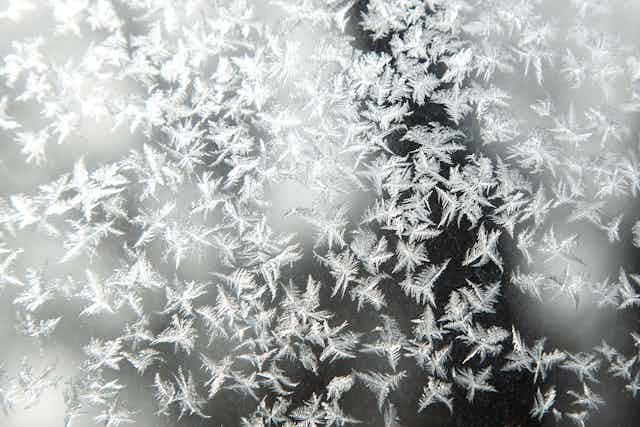A chilly winter morning, the car windshield shrouded in a thick layer of frost. Who has not experienced the frustration of scraping ice or waiting for the defroster to work? It is a daily winter struggle, but what if this frost issue extends far beyond your car, into your very home? Welcome to the hidden battle with frost in our energy systems.
Frost forms when humid air comes into contact with freezing cold surfaces. The colder the surface and the more humid the air is, the more likely frost will form on the surface.
In buildings, frosting is a problem that impacts several systems, including heat pumps that keep indoor spaces warm. Researchers at the University of Saskatchewan are working to eliminate this chilly scenario by creating frost-resistant heat pumps.
Current challenges
Frost poses serious challenges to the functionality of heat pumps. The frost layer acts as an insulator, reducing the heat transfer capability, which increases energy use and negatively impacts the comfort of users. Frost also blocks air passages, and a severe frost buildup can even damage or destroy the system.

Heat pumps electrify heating and play a pivotal role in our quest for energy efficiency and eco-friendliness, owing to their relatively high efficiencies. Acting as devices that transfer heat from one place to another, they are promising solutions for the future of heating. With the potential to cut down energy consumption and emissions, improving heat pumps is crucial in our eco-conscious world.
To tackle frosting, commercial heat pumps usually go into recurrent defrosting cycles, during which heating is not accessible. Therefore, most heat pumps in cold climates are installed with backup fuel-burning or electric heating systems. Several optimization techniques have been suggested for the defrosting cycles to become more effective.
Given the challenges of removing frost from heat pumps, the prospect of creating frost-free systems becomes increasingly appealing. However, preventing frost without consuming excessive energy is a complex task, filled with intricate technical hurdles.
Ongoing research
A major part of the ongoing endeavours to develop frost-free heat pumps has roots in research into frost-free energy exchangers. The outdoor unit of a heat pump system is a heat exchanger. It facilitates heat transfer from outdoor air to the refrigerant fluid running through the coils.
Read more: Do heat pumps work in the UK's climate? An expert answers your low-carbon heating questions
If heat exchangers prevent condensation, they can reduce the risk of frosting. This is what membrane energy exchangers do by removing moisture and preventing air saturation.
Future heat pumps can benefit from membrane energy exchangers that use liquid working fluids. The membrane energy exchanger would replace the traditional finned tubes in heat pump outdoor units and make them frost-resistant.

Using membranes to develop frost-free solutions for heat pumps is not without its challenges. We need to address several issues regarding membrane energy exchangers. Finding commercial membranes and non-corrosive liquids suitable for the application are two examples. Frost detection is another challenge in membrane energy exchangers.
Properties, behaviour and the triggering conditions of frosting have already been investigated. Ongoing research by my team at the University of Saskatchewan is now trying to identify ideal membrane characteristics and design factors for the application.
Shaping a sustainable future
Future frost-resistant heat pumps will dramatically enhance energy efficiency, slash household bills and take a significant step toward a more sustainable future. Scientists are contributing to the technological advancements required to realize this futuristic concept.
Read more: How heating your home fuels climate change – and why government measures are failing to stop it
These advancements are not just about the science; they symbolize a transformation in our everyday lives, making winter days more convenient and our homes and buildings more environmentally friendly at the same time.

